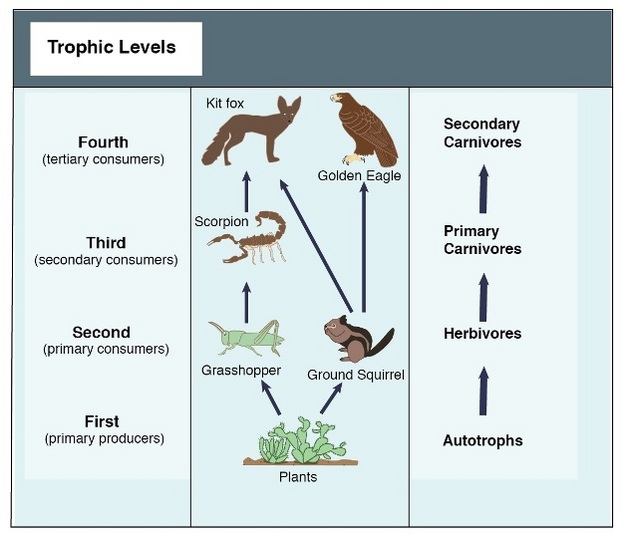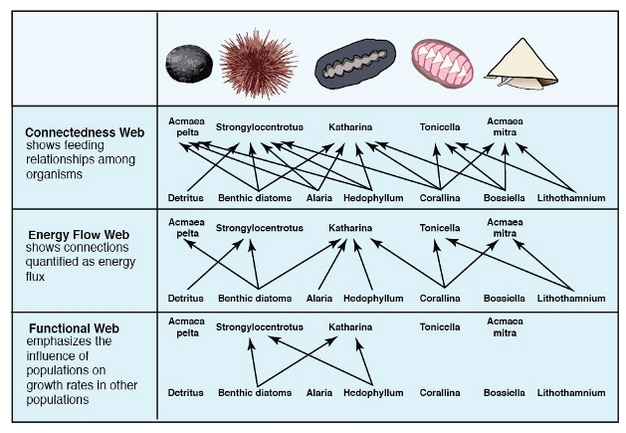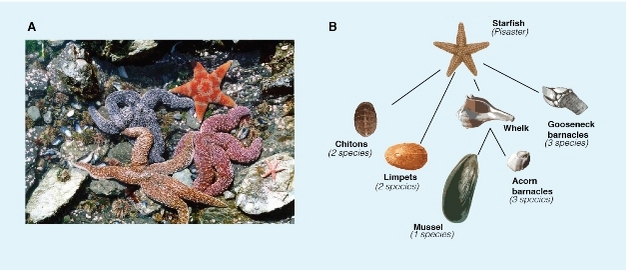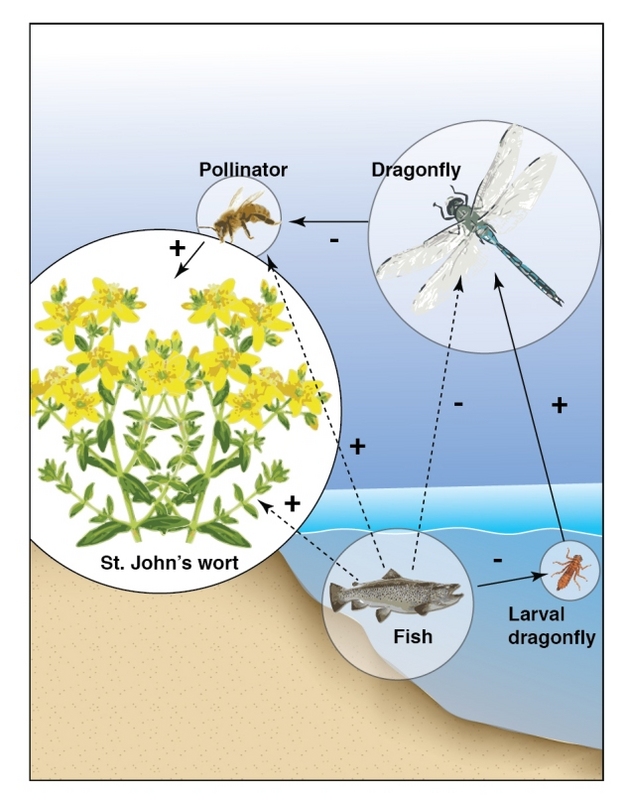Food chain, in ecology, the sequence of transfers of matter and energy in the form of food from organism to organism. Food chains intertwine locally into a food web because most organisms consume more than one type of animal or plant. Plants, which convert solar energy to food by photosynthesis, are the primary food source. In a predator chain, a plant-eating animal is eaten by a flesh-eating animal. In a parasite chain, a smaller organism consumes part of a larger host and may itself be parasitized by even smaller organisms. In a saprophytic chain, microorganisms live on dead organic matter.
In general, food chain is a link through which energy is transferred from one tropic level to another.

Types of Food web
Food webs describe the relationships — links or connections — among species in an ecosystem, but the relationships vary in their importance to energy flow and dynamics of species populations. Some trophic relationships are more important than others in dictating how energy flows through ecosystems. Some connections are more influential on species population change. Based on different ways in which species influence one another, Robert Paine proposed three types of food webs based on the species of a rocky intertidal zone on the coast of Washington (Ricklefs 2008, Figure 2). Connectedness webs (or topological food webs) emphasize feeding relationships among species, portrayed as links in a food web (Paine 1980). Energy flow webs quantify energy flow from one species to another. Thickness of an arrow reflects the strength of the relationship. Functional webs (or interaction food webs) represent the importance of each species in maintaining the integrity of a community and reflect influence on the growth rate of other species’ populations. As shown in Figure 2, limpets Acmaea pelta and A. mitra in the community consume considerable food energy (energy flow web), but removal of these consumers has no detectable influence on the abundance of their resources (functional web). The most effective control was exerted by sea urchin Stronglocentrotus and the chiton Katharina (Ricklefs 2008).

Application of food webs
Food webs are constructed to describe species interactions (direct relationships).
The fundamental purpose of food webs is to describe feeding relationship among species in a community. Food webs can be constructed to describe the species interactions. All species in the food webs can be distinguished into basal species (autotrophs, such as plants), intermediate species (herbivores and intermediate level carnivores, such as grasshopper and scorpion) or top predators (high level carnivores such as fox) (Figure 1).
These feeding groups are referred as trophic levels. Basal species occupy the lowest trophic level as primary producer. They convert inorganic chemical and use solar energy to generate chemical energy. The second trophic level consists of herbivores. These are first consumers. The remaining trophic levels include carnivores that consume animals at trophic levels below them. The second consumers (trophic level 3) in the desert food web include birds and scorpions, and tertiary consumers making up the fourth trophic level include bird predators and foxes. Grouping all species into different functional groups or tropic levels helps us simplify and understand the relationships among these species.
Food webs can be used to illustrate indirect interactions among species.
Indirect interaction occurs when two species do not interact with each other directly, but influenced by a third species. Species can influence one another in many different ways. One example is the keystone predation are demonstrated by Robert Paine in an experiment conducted in the rocky intertidal zone (Cain et al. 2008; Smith & Smith 2009; Molles 2010). This study showed that predation can influence the competition among species in a food web. The intertidal zone is home to a variety of mussels, barnacles, limpets, and chitons (Paine 1969). All these invertebrate herbivores are preyed upon by the predator starfish Pisaster (Figure 3). Starfish was relatively uncommon in the intertidal zone, and considered less important in the community. When Paine manually removed the starfish from experimental plots while leaving other areas undisturbed as control plots, he found that the number of prey species in the experimental plots dropped from 15 at the beginning of the experiment to 8 (a loss of 7 species) two years after the starfish removal while the total of prey species remained the same in the control plots. He reasoned that in the absence of the predator starfish, several of the mussel and barnacle species (that were superior competitors) excluded the other species and reduced overall diversity in the community (Smith & Smith 2009). Predation by starfish reduced the abundance of mussel and opened up space for other species to colonize and persist. This type of indirect interaction is called keystone predation.
Figure 3(a) The rocky intertidal zone of the Pacific Northwest coast is inhabited by a variety of species including starfish, barnacles, limpets, chitons, and mussels. (b) A food web of this community shows that the starfish preys on a variety of invertebrate species. Removal of starfish from this community reduced the diversity of prey species due to increased competition.
. In a study conducted near Gainesville, Florida, Knight and her colleagues (2009) investigated the effects of fish in ponds on plant seeds production. They measured and compared abundances of both larval and adult dragonfly in and around four ponds that had been stocked with fish and four ponds that lacked fish (Knight et al. 2009). They found that ponds with fish produce fewer larval and adult dragonflies than ponds without fish, as fish prey on larval dragonflies. As dragonfly population decreases, the populations of their prey, including bees, flies, and butterflies, decrease. These prey species are pollinators of the plants. Therefore, flowers in the vicinity of ponds without fish receive fewer pollinator visits than flowers close to ponds stocked with fish. Since the production of seeds is pollen-limited, fewer pollinator visits result in lower seeds production. This study demonstrates, via a complex trophic cascade, that adding fish to a pond improves the reproductive success of a plant on land (Ricklefs 2008).

